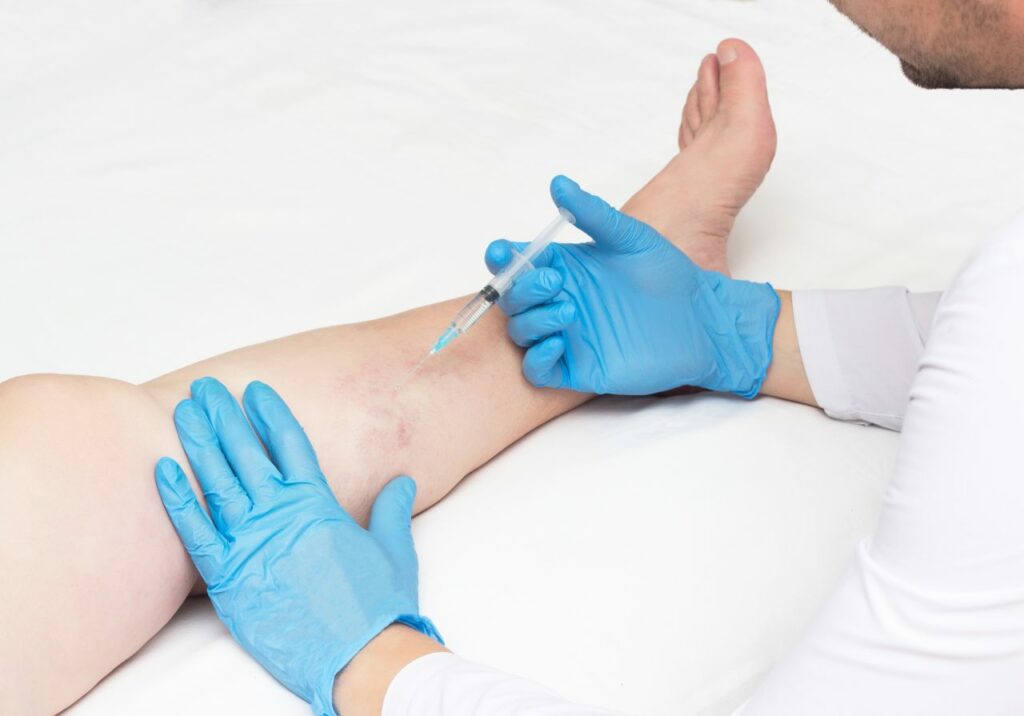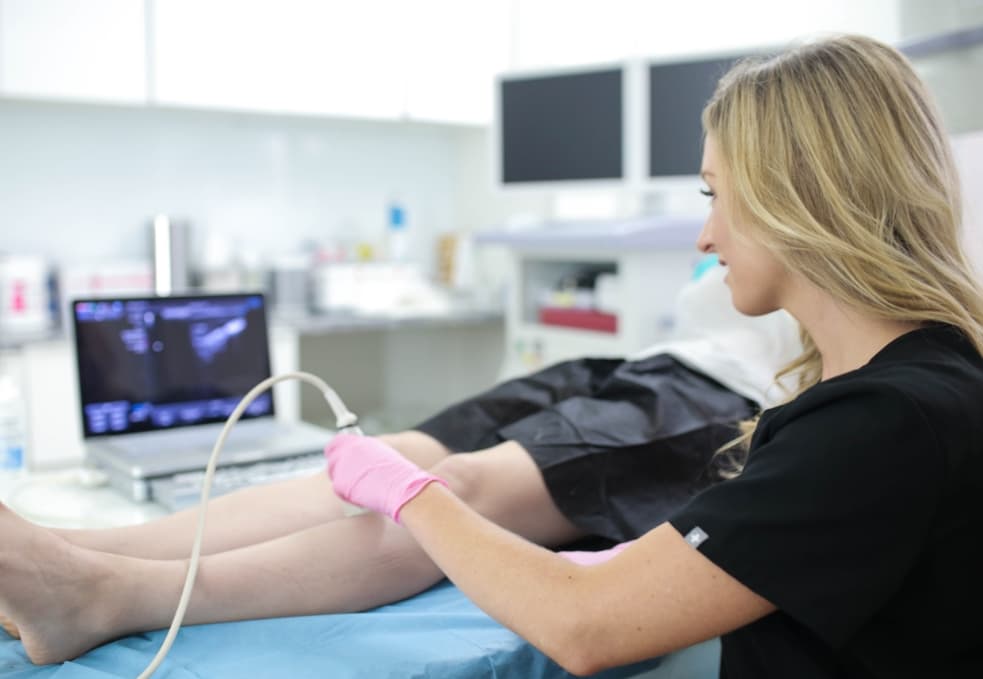How long does it take for spider veins to disappear after laser treatment?
If you’re wondering how long it takes for spider veins to disappear after laser treatment, you’re probably considering laser therapy for spider veins. Laser therapy is a non-invasive procedure wherein specifically calibrated wavelengths of light energy are delivered into the damaged spider veins. The unhealthy spider veins absorb the light energy, and the vein walls are immediately damaged.
Over time, the spider veins shrink and fade away from the skin’s surface. You need multiple laser therapy sessions spaced several weeks apart to see improvements. The spider veins gradually fade away from the skin’s surface after a few weeks. However, since laser therapy doesn’t address the root cause of spider veins (vein disease), the spider veins may eventually return.

What are the limitations of laser therapy for spider veins and varicose veins?
Laser therapy is one of the least effective treatments for spider veins and varicose veins. Laser therapy can only treat extremely small spider veins on the skin’s surface, and the results appear after several sessions for multiple weeks. The only reason for the popularity of laser therapy is that it’s heavily promoted by medical spas because it doesn’t have to be performed by licensed and skilled vein doctors — it can be performed by cosmetic technicians. Below, we highlight the reasons you should avoid laser therapy for spider veins.
Laser therapy doesn’t work on larger spider veins
Laser therapy isn’t suitable for larger spider veins or varicose veins. Laser therapy can only work on extremely thin, thread-like spider veins that appear on the skin’s surface. The cosmetic provider channels the wavelengths of light energy into the spider veins to destroy the vein walls. However, it takes multiple laser therapy sessions to destroy the vein walls, so the results appear gradually. The treatment won’t work at all on slightly deeper or larger spider veins.
Laser therapy can’t identify or treat vein disease
In most cases, spider veins are symptomatic of chronic venous insufficiency, a dangerous medical condition caused by damaged vein valves. Venous insufficiency is a circulatory disorder that can lead to leg heaviness, restless leg syndrome, leg pain, frequent leg cramps, leg ulcers, and other conditions. Treating spider veins without addressing the root cause is a wasted effort — the spider veins will simply return. Unfortunately, laser therapy is performed by cosmetic technicians without the skills or expertise to diagnose or treat vein disease.
Laser therapy has a high rate of recurrence
Laser therapy has an incredibly high rate of recurrence. Laser therapy can only diminish and shrink the unwanted spider veins, but there’s a chance that the veins might return because of increased blood circulation. Furthermore, laser therapy doesn’t treat the underlying vein disease responsible for your spider veins. If you don’t treat underlying vein disease, you will simply develop new spider veins. That’s why laser therapy has a high rate of vein disease recurrence. You need spider vein treatments that ensure long-lasting results.
Laser therapy takes a long time to work
Laser therapy is an extremely slow procedure that takes a long time to work. Your non-invasive laser therapy session will heat and shrink the damaged spider veins’ walls, reducing their visibility on the skin’s surface. However, this treatment doesn’t immediately destroy the unhealthy veins, so the results appear gradually over several sessions. Most patients notice the results after several weeks of multiple laser treatments.
Sclerotherapy: the best minimally invasive treatment for spider veins and varicose veins
Sclerotherapy is widely considered the best minimally invasive treatment for spider veins and small varicose veins. Sclerotherapy is a minimally invasive procedure that involves injecting a specialized sclerosant solution into the spider veins. The sclerosant medicine fuses and seals the spider veins’ walls while inducing an inflammatory reaction. The spider veins essentially turn into scar tissues eventually metabolized by the body, making them fade away from the skin’s surface.
Sclerotherapy can remove all spider veins
Sclerotherapy can remove all unhealthy spider veins from the skin’s surface. The vein doctor individually targets each spider vein, delivering one injection per vein. As such, over the course of one, two, or more sessions, the vein doctor can remove all the unhealthy spider veins.
Foam sclerotherapy can remove varicose veins
Foam sclerotherapy is a form of sclerotherapy in which the liquid sclerosant medicine is agitated with air, turning it into a foamy solution. The foam sclerosant solution is injected into varicose veins to seal them shut and turn into scar tissues eventually metabolized by the body.
Sclerotherapy is performed by vein doctors
Sclerotherapy is performed by licensed and skilled vein doctors — not cosmetic technicians. Vein doctors generally identify and diagnose the underlying vein disease. If your spider veins are symptomatic of vein disease, there’s a stronger chance you’ll receive a diagnosis.
Sclerotherapy has a minimal rate of recurrence
Sclerotherapy has a minimal rate of recurrence. Each sclerosant injection removes one spider vein and ensures it can’t return. Furthermore, since your vein doctor can diagnose the underlying vein disease, the risk of developing new spider veins is low.
Sclerotherapy has decades of clinical evidence
Sclerotherapy is backed by decades of clinical evidence. The sclerosant medicine used for the treatment has gradually improved over the years, but the treatment has a proven track record.
Additional treatments for underlying chronic venous insufficiency…
If you have chronic venous insufficiency, the vein doctor may perform an endovenous laser treatment or endovenous radiofrequency ablation before sclerotherapy. Endovenous laser treatment is a minimally invasive procedure wherein the vein doctor uses a specialized laser fiber to generate laser energy and destroy the diseased saphenous vein. The accumulated blood reroutes into healthier leg veins, restoring optimal blood circulation to the heart. The procedure concludes within an hour with no downtime.
